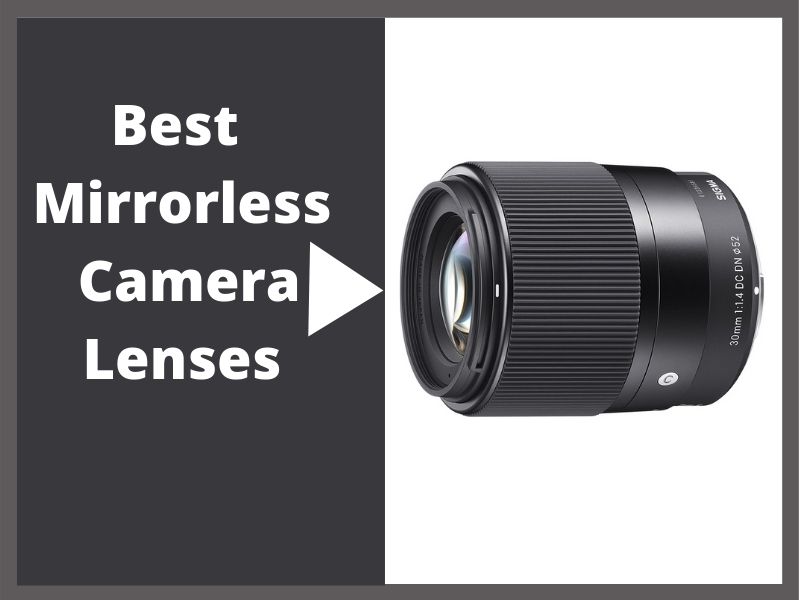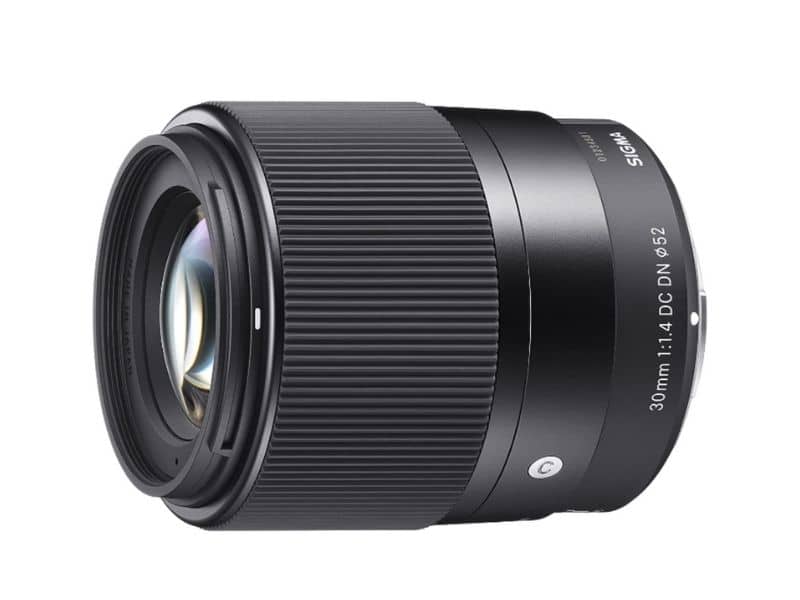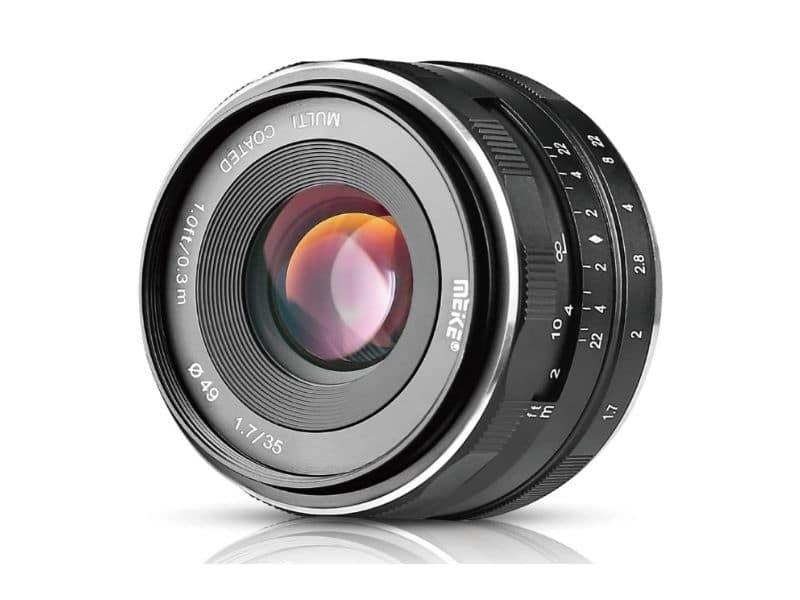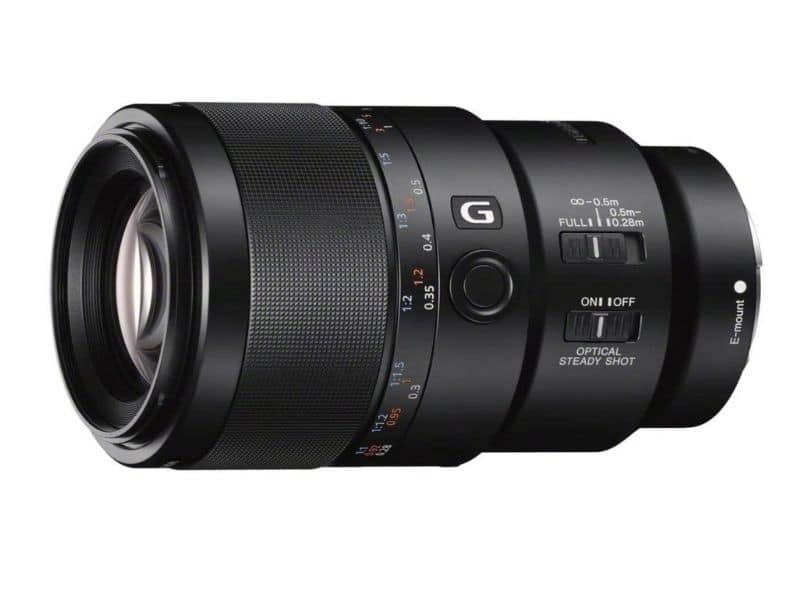As an Amazon Associate I earn from qualifying purchases.
While it is a matter of photography, finding a perfect camera never been so easy in any way either it can be a smartphone camera or a professional digital camera.Here you can solved from the topic Best Mirrorless Camera Lenses And choosing the right camera lens obviously depends on which camera system do you prefer.
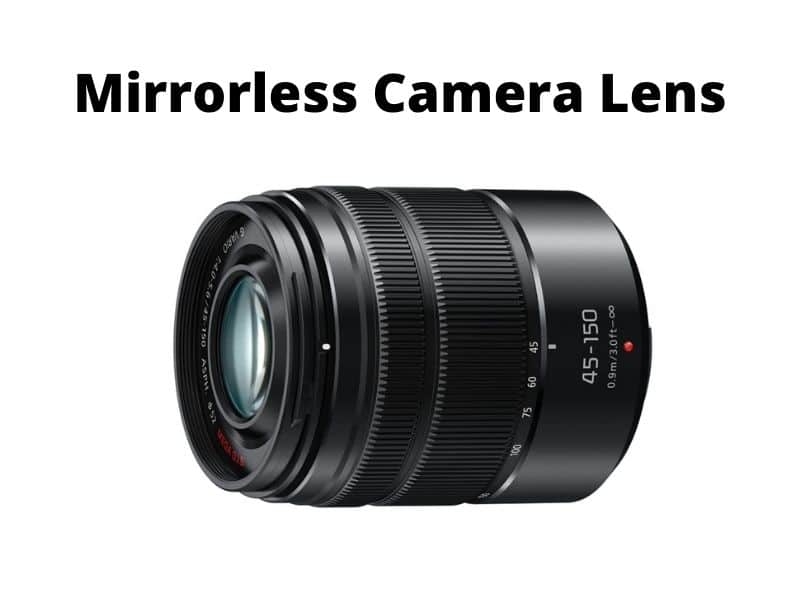
Earlier, the photography was limited to a frame but now photography means the world is, in your hand. Thanks to all the social media for the growth of influencers and vloggers.
Picking an accurate camera lens is not easy especially when you are a beginner and just want to start your photography skill, while you don’t have vast knowledge about all the models of mirrorless camera lenses. And when there is a wide-ranging choice available in the market depending on the models and brand then you might end up with getting lost.
Also the fact is, for me, I became lost for quite a few times. And I had to dive into almost near about a hundred models. The mirrorless camera market indeed is a hothouse of technical revolution, with the hottest and up to date models are serving beyond just the megapixels. Mirrorless cameras have an incredible amount of interchangeable lens options.
Contents
Definition of Mirrorless Camera
The Usual DSLR cameras need a mirror to reflect the light, which originates through the lens, up to the optical viewfinder. But according to the name, a mirrorless camera is the one that doesn’t need a mirror.
In a mirrorless camera, there is no optical viewfinder. The lens ventures the image straight onto the sensor, and then you may see the digital look of the image on the electric viewfinder or the display.
Mirrorless cameras are also called compact system cameras and these are usually seen to be used as an alternative of DSLR cameras. Mirrorless means they are habitually lighter and smaller than their old fashioned ancestors.
Things to Consider While Choosing A Mirrorless Camera Lenses
While buying a mirrorless camera maybe you must be thinking a side question that is, which lens should I pick for this kit? The piece of glass you place in front of your camera sensor plays a vital role while you are shooting, how does your photos or videos look like and what sorts of shooting you can do. Though it is a complex decision. You should remember some important factors like speed, lens type prime or zoom, sharpness, distortion, and the most important, your budget.
1. Which mirrorless lenses are perfect for what type of photography
It is a bit hard task to classify everything perfectly for camera lenses and their uses. But generally, there are some lenses available with their relevant features, those are much more appropriate for some photographic performs. Though, the complete thing will vary depending on the size of the sensor.
- Photography For Portrait
Depending on your demand, you may prefer to shoot distant portraits or close-fitting, fixed focal lengths are most ideal. It is generally practiced focal length about
- Full Frame – 100-135mm
- APS-C – 50-100mm
- Micro 4/3 – 35-50mm
- Photography For Design and Landscape
For this kind of photography usually, it is recommended to use an ultra-wide-angle lens or a wide-angle lens. A telephoto lens can be used to make this type of picture. Very often we can practice these sorts of focal lengths around
- Full Frame – B14-20mm
- APS-C – 10-17mm
- Micro 4/3 – 7-14mm
- Photography For Sport and Wildlife
For taking this kind of photo capture telephoto fixed or zoom lenses are mainly used. Possibility, the number of your camera frames per second (ip/s) and the burst mode of your camera even it is more essential in parallel relation with your lens. For these, we can stick to focal lengths about
- Full Frame – 70-200mm
- APS-C – 55-200mm
- Micro 4/3 – 35-100mm
- Photography For Macro
For this, it depends on your sensor again but usually, you will have the focal lengths of near about
- Full Frame – 100mm
- APS-C – 60-80mm
- Micro 4/3 – 30-60mm
2. Some Technical terms to Know
In the beginning, you must know that there is no difference between choosing one mirrorless digital camera lens and choosing a DSLR camera lens.
The different standards to look into are indistinguishable. Though, here I am trying to explain in a summary of the things you must have to be known.
- The Lens Brand, either native or others
Every brand has some native lenses. You will find lots of Variety to pick from Canon, Nikon, and including other brands like Sony, Panasonic, and Fuji. Each brand deals with particular condensations to reveal such as compatible with full-frame formats and APS-C. You must know that both brand Panasonic and Olympus feature Micro 4/3 sensors and they share the same sensor and both brand lenses are compatible with each other. Which is a plus point to have more possibilities.
The following table below reviews the summarizations of the brands.
Brand Name | Compatibility with APS-C | Compatibility with Full Frame | Compatibility with mFT (4/3) |
Canon | EF-M | RF | --- |
Sony | E | FE | --- |
Nikon | Z DX | Z | --- |
Panasonic | --- | L | Lumix/Zuiko |
Olympus | --- | --- | Lumix/Zuiko |
Fujifilm | X | --- | --- |
Sigma | DC DN | DG | DC |
Tamron | Di III | Di III | Di III |
- The Cost
Though camera lens is a technical element but still for some people it is not technical and many of you are maybe not ready to spend around thousand dollars for a camera lens. It depends on the reasons for your choice. While you are choosing a lens for your DSLR you must need to find something considering your needs, budgets, and demands. Whatever your camera is not a big deal but always remember that usually, the larger lenses are more expensive, heavy, and difficult to handle.
- Focal Length
This is one of the most necessary features while formulating your decision between mirrorless lenses. For the novices who do not have vast knowledge about the tenure, it is mostly known as the “zooms level” of your lens. There are fixed 14mm and variable 24mm -70mm focal lengths. These mainly specify the values in millimeters on your lenses such as 35mm, 100mm, and 300mm.
The focal length always influences your viewing direction. An 11mm short focal length accedes a wider viewing approach compared to a 300mm long focal length.
Mostly we have categorized the focal lengths into 3 groups such as
- Standard or Transtandardo Focal Lengths
- Wide Angle or Ultra Wide Angle
- Telephoto Lenses
Focal length mainly refers to a full-frame camera, and then come to the range of a summarized sensor. Aimed at a mirrorless camera, you have 3 types of sensors such as
- Full Frame
- APS-C
- Micro 4/3 Sensor
APS-C, full-frame, and Micro 4/3 all come with its specific size. A Micro 4/3 sensor is smaller, it is almost half of the size of a full-frame sensor and the APS-C sensor is 1.5 times smaller.
You must need to know that a focal length doesn’t provide an equal effect depending on the kind of sensor is using.
The transtandard lenses are quite easy to understand. You may pick between
- A 12-35mm on Micro 4/3 sensor,
- A 16-55mm on an APS-C,
- A 24-70mm on a full-frame sensor, it is a large sensor.
- Maximum Aperture
After the focal length, this is the 2nd important element while finding your mirrorless lenses. You may say that the capability of the optics to gather light to enter into the lens. You will see the number “f/” written just behind on your lens such as f/1.2, if the number is smaller then the aperture is larger and contrariwise, if the number is larger such as f/16 then the aperture is smaller.
A large maximum aperture admits you faster response time and it helps to take pictures faster. It is helpful for your perfect shots in low light condition and it reduces the depth of the field and helps to blur the background to separate an object.
On behalf of mirrorless camera lenses, a tone must be identified according to the size of the sensor. It is not likely to compare a micro 4/3 sensors that are half as small to one an aperture of f/2.8 on a Full frame sensor. Definitely, the outcome won’t be the same.
If you want to compare then you must need to compare a 50mm f/2 Full-Frame lens with a 35mm f/1.4 (APS-C) lens to get the nearly same outcome.
If you notice another example for a likely outcome is to compare with a 24mm f/2.8 lens with a 12mm f/1.4 MFT on a Full Frame sensor. You may observe that the diagonal of an MFT sensor is half in size as small as a Full Frame sensor.
The comparable focal length is consequently doubled to get a related angle of view between both sized sensors. Concerning the maximum aperture, the outward of an MFT sensor is four times smaller than a full-frame sensor, so the variance of 2 stops. So consequently there is self-styled equality between an aperture of f/2.8 on full-frame and an aperture of f/1.4 on mFT.
- Construction
Construction is also another important part to be concerned. There are several ranges from entry-level to very expensive pro lenses that are available with the brands. For lenses, most of the cases the more expensive lens means the better performance and more sturdy at making. Though it depends on how passionate you are and on your daily needs. If you want to buy for your daily life then you may not require focusing on a tropicalized lens.
Instead, if you have habits of traveling in difficult places in different conditions such as in dust, wind, cold, or maybe you live in an area with extreme humidity level then it will be worth purchasing.
- Material facts (heaviness, size, and compactness)
Probably most of you who choose to shift to a mirrorless system may be attracted to the building materials, durability, and size of the cameras and the lenses. Usually, if you are a beginner you can start with a mirrorless camera because these are always slightly lighter in weight and smaller in size.
For high-end expensive mirrorless lenses are merged with a Full Frame sensor, the variance between the weight, size, and dimension in comparison to a DSLR still occurs, but it is quite limited.
- Steadiness and Stability
The steadiness of your camera lens is also one of the essentials to consider into account while making your buying decision. A steadied lens permits you to build usually limit motion blur in low-light situations and besides while operating long focal lengths, in which higher shutter speed is normally desired. You need to remember that steadied lenses are usually quite expensive and heavy in weight. Very often, for every brand, you have a condensation that reminds you of the stabilization.
Maybe you want to start photographing new subjects; so a new lens is probably in demand. Either you are considering taking event photos, sports photos, close-ups, or cores; I have got some suggestions for you to make your choice a bit easier.
For all sorts of lenses I have picked in this buying guide, offers the greatest mixture of performance and usefulness, together with more options for those who want a budget-friendly or for whom money is not a big matter.
By reading our entire guide you can research to find your best mirrorless camera lens for you.
1. Sigma 30mm F1.4 Contemporary DC DN Lens for Sony E
Manufacturing and Design
The Sigma 30mm F1.4 Contemporary DC DN lens is a compact standard-angle, bright, crisp lens and available for both Micro 4/3 cameras and Sony APS-C systems mirrorless cameras.
Though the 30mm f/1.4 is cheerfully available for SLR systems they are not so bountiful for mirrorless cameras, mainly those uses smaller than full-frame sensors.
The Sigma F1.4 Contemporary DC DN lens is a solid performer, taking crisp photos and providing solid control over depth of field.
The 30mm F1.4 is properly compact for an f/1.4 design. The 30mm F1.4 Contemporary weighs just 9.4 ounces, measures 2.9 by 2.6 inches in size, and upkeeps 52mm front filters. The tub is a combination of metal and polycarbonate, but the lens doesn’t come with weather seal to safeguard from the entry of dust and moisture.
You can buy the lens for Micro 4/3 cameras from Panasonic and Olympus or for an E-mount style for Sony cameras with APS-C sensors. The APS-C sensor is quite larger, so the lens performs like a 45mm full-frame lens while combined with a Sony camera. It comes with a slightly tighter, 60mm angle of sight on a Micro 4/3 body.
The Sigma 30mm F1.4 Contemporary is an Auto Focus (AF) Regular Prime lens with APS-C / DX max format sensor and it is intended to be used with the Sony E mount lenses. It comes with a max aperture of F1.4 and a minimum aperture of F16.0.
It is a comparatively low priced lens and it is easily accessible for beginners.
Key Features
- The Lens type is Standard Prime lens
- The compatible mounting is Sony E
- The lens focal range is 30mm and the maximum focal length is 30mm and the minimum focal length is 30mm
- The lens focus type is autofocus
- The max format sensor APS-C/DX
- Lens color is black
- The zoom ratio is 1.0X
- The maximum Aperture is F1.4 and the minimum Aperture is F16.0 and Diaphragm blades 9
- It comes with 9 optical elements and 7 optical groups
- The special elements feature 1aspherical and 1 double-sided spherical
- The lens weight is 265g, length 73mm and the diameter is 65mm
- It comes with 52mm filter thread
Pros
- The color is great
- Good controlled CA
- Amazing sharpness
- Fast and accurate Auto-Focusing in good light
- No flare
- Good looking, lightweight and reasonable price
Cons
- No weather seal protection
Customer’s evaluation
“Perfect lens, worth every penny. I love this lens. The 1.4 is great for low light and shallow depth of field. I use my camera mainly for studio photography of the tattoos I’ve done. But ever now and then I take portraits. The autofocus is fast and the quality is unmatchable.”- Keith Hancock
2. PANASONIC LUMIX Professional 12-35mm Camera Lens G X VARIO II, F2.8 ASPH, Dual I.S. 2.0 with Power O.I.S., Mirrorless Micro Four Thirds, H-HSA12035
Manufacturing and Design
The LUMIX Professional 12-35mm Camera lens feels very steadily built, very lightweight, and compact. The lens comes with a constant f/2.8 maximum aperture and it only weighs 305g. The lens is made from high-quality plastics, which contains a dark grey gunmetal polish and the lens mount is built from metal.
The LUMIX Professional 12-35mm lens is intended to be resistant to dust and moisture that makes it suitable for use in bad conditions.
The Focusing is implemented internally, accordingly, the 58mm filter thread does not turn, and the graduated and polarizing filters make this lens ideal for use. Autofocus is very quick and accurate.
The optical image stabilizer permits sharp hand alleged pictures to be taken when the shutters speed as low as 1/10sec at 35mm, which is approximately 3 stops slower than the normal rule of thumb would accept otherwise.
At 12mm and f/2.8 sharpness in the midpoint of the frame, which is really, impending outstanding levels, and the clearness near the edges of the frame is pretty good. Finishing down to f/4 ends in wonderful sharpness in the middle of the frame, and fair sharpness concerning the edges. At 35mm, the sharpness increases.
It is money worthy buy.
Key Features
- The camera lens features a durable metal body, dustproof, freezeproof
- The 35mm camera equivalent 24-70mm and F2.8 constant aperture glare
- The Panasonic Nano surface coating decreases unnecessary brightness
- The 240 fps linear motor acts faster focus tracking
- POWER O.I.S. counteracts camera shaking and vibrations
- The lens description is 35mm. The maximum focal length 35mm and the minimum focal length is 12mm
- It is a wide-angle zoom lens
- The lens features optical image stabilization
- The lens maximum aperture 2.8f and the minimum aperture 22f
Pros
- Weather sealed protection available
- Low distortion
- Outstanding sharpness in the middle of the frame
- Very quick focusing
- Lightweight and compact size
- Optical image stabilization
- Constant f/2.8 aperture
Cons
For some people maybe the price is a little high
Customer’s evaluation
“Must have for GH5. I bought this lens for use with the GH5. It rocks! My standard go-to walking around lens. Combined with the in-camera stabilization of the GH5, shaky video is a thing of the past. Would recommend as a standard lens in your arsenal.”- Florida
3. Meike 35mm F1.7 Large Aperture Manual Prime Fixed Lens APS-C for Sony E-Mount Digital Mirrorless Cameras
Manufacturing and Design
The Meike 35mm F1.7 is a simple yet outstandingly multipurpose lens, the MK-35mm f/1.7 Lens from Meike is a fully manual and 52.5mm equal prime categorized lens with its maximum aperture bright f/1.7 to ensemble working in dark or in low-light conditions and for getting shallow effects of depth field.
The lens elements made with a multi-layered Nano coating. The surface reflections, flash, and ghosting to understand a high degree of contrast, brightness, and color accuracy, everything controlled by the multi-layered Nano coating elements.
Moreover, the lens plays roles as a manual focus object for working with themes as close as 11.8″ faraway.
The manual focus mechanism together with a manual aperture ring deals accurately controlling over both the focus and the exposure.
The Meike 35mm F1.7 lens is intended for Sony E-mount APS-C-format mirrorless cameras and it delivers a 52.5mm equal focal length. The maximum aperture working in low-light conditions and besides offers excellent control over depth of field.
The metal construction is strong and the depth of field and for pre-focusing needs, the focus distance rulers have been stamped on the lens barrel.
The lens is good for almost all types of photography such as Landscape and portraits photography, Street, Product, and indoor photography as well. It features a maximum aperture of f/1.7, which allows you to shoot at low light and dark environments at nighttime.
Key Features
- The 35mm camera equivalent 52.5mm
- The lens aperture range is f/1.7 to f/22 and the filter diameter 49mm
- The lens type is a prime lens
- The focus is fully manual
- The lens elements made with multilayered Nano coating and the angles are Diagonal 44 degree 20′ Horizontal 36 degree 30′ Vertical 23 degree
- Designed for Sony E mount full-frame cameras but the camera must need to set APS-C-format
- The lens features 5 groups 6 slices
- Lens maximum focal length 35mm and minimum focal length 35mm
Pros
- It is a great budget lens
- It is solid and small
- Gorgeous look and works well
- Very sharp and bright images
- Fully manual focus
Cons
- There is no con found
Customer’s evaluation
“ $89 beast! Absolutely worth the price, the lens is far better than the kit lens I got with my a6000 in terms of manual control and clarity. Colors are very natural and sharp. Pics, I took with it, it picks up even the faintest of color variations.”-Carl
4. Fujinon XF16mmF1.4 R WR

Manufacturing and Design
The Fujinon XF 16mm F1.4 R WR from Fujifilm takes the best price with its matching performance. The XF 16mm covers a wide view 24mm in full frame. It is perfect for low light shooting and blurred background. Also it deals with the best manual focus compared to other lenses. It is quite fast and sharp even at the edges of the frame.
The lens barrel is metal polished and glossy black.
The Fujinon XF 16mm is a wide-angle prime lens. It measures 2.9 by 2.9 inches (HD). Also It supports a 67mm front filter. It comes with internal seals to protect the lens from splashes and dust.
You will get the manual aperture control ring. It opens at f/1.4 and allows going as tight as f/16; it has 3 stop adjustable increments.
There is a noticeable distance scale available, which indicates in feet and meters, so you may move the focus to a specific point according to your need.
It features a manual focus ring. It is uncovered metal, with a knurled polish. The Fujinon XF 16mm practices a clutch method to alteration between manual focus and autofocus. If you pushed the ring forward, the lens autofocuses and pulling it back changes the lens to manual focus.
Key Features
- The lens type is a prime lens
- The focal length description 16mm
- Fujifilm X-Mount is well-matched with all FUJIFILM exchangeable system cameras
- The aperture ring available. Maximum aperture is f1.4 and the minimum aperture is f16
- It has 9 diagram blades
- The physical weight of the lens is 375g, length 73mm, diameter 73mm and color black
- It has an internal focusing method. It features both options autofocus and full-time manual. The minimum focus is 0.15m and maximum magnification 0.21X
- The lens features 13 elements and 11 groups and 2 aspherical, 2 ED elements
- The filter thread is 67mm
- Weather-resistant strategy with 9 sealing points in 8 areas
- Nano-GI coating adjusts the refractive index between glass and air to lower the ghosting and flare
Pros
- Short minimum focus
- Nice design and bright
- Fast, very sharp
- Autofocusing
- Dustproof and splash resistant
- It features aperture ring and manual focus grasp
- Low distortion
- Even illumination from f/2 on
Cons
- The price is a little bit high
Customer’s evaluation
“Bought the 16mm f1.4mm after lots of research and reviews. Been using now for 3 months and in my opinion, this is a wonderful lens. Quick, sharp focus and great color. Highly recommend.”- James Clark
5. Sony SEL90M28G FE 90mm f/2.8-22 Macro G OSS Standard-Prime Lens for Mirrorless Cameras, Black
Manufacturing and Design
The Sony FE 90mm f/2.8-22 Macro Standard-Prime Lens is fully loaded with features, which is a high-end choice from Sony. It has pretty good value; you might need to be covered for portrait shooting.
The lens elements feature Nano AR coating on them that reducing problems like ghosting and light flare and these are useful while shooting in well-lit conditions.
The lens made with special elements. Featuring consistent detail and focus, this lens can be the perfect choice for larger portraits where you need to capture the entire image.
Blending of Outstanding image sharpness and super-smooth focus rendering, the Sony FE 90mm f/2.8-22 is a great macro lens for image capturing. It features combined metal and plastic make, and dust and moisture resistant sealing, it is also a solid little piece of kit.
The barrel has a Focus Hold button, Focus Limiter switch with three different limiting options, and an OSS on/off switch. Besides, there is a ridged, pump-action focuses ring for swapping between AF and MF operation. Though MF handling is very fine AF is not super fast – but this is not a big deal while you are mostly using it for macro work anyway.
The focus hold button that you can keep pressing to adjust the result for good focusing. Moreover, a Direct Drive SSM system makes the act of focusing very quiet.
It is a prime lens, and its focal length is fixed at 90mm however, with some distance and focusing, this is wonderful for photographing still subjects.
Key Features
- This is a standard prime lens
- It is compatible with Sony E mounting and perfect match for a7 series
- The lens description is 90mm
- The maximum focal length is 90mm and the minimum focal length is 90mm
- The fixed focal length of the lens is 90mm
- It is constructed by using Nano AR coating
- The lens is 90mm Macro with a bright F2.8 maximum aperture,
- It is dust and moisture resistant
- The minimum Focus Distance is 0.92 ft (0.28 m) and Maximum Magnification ratio is 1.0x
- The angle of view is 27 degree (35 mm) and 17 degrees (APS-C)
- The lens weight is 602g
- It features Instant manual/autofocus selection via a sliding focus ring
Pros
- The build quality is excellent
- The Innovative aspherical elements make each captures sharp from edge to edge
- Fast Autofocus
- The Focus hold button admits you to continue focus for a longer period
- Perfect optics
- Nano AR coating confirms lit-environment functioning by decreasing flares and ghosting.
- Optical Steady Shot image stabilization maintains your shots still and steady
Cons
- It is heavy for a prime lens
Customer’s evaluation
“Amazing lens! Worth the investment. Great lens. Super sharp. A 1 to 1 ratio is great for food pictures. Amazon delivery said it would need a signature due to cost. Was dropped and left without it.”- Jamie A.
6.PANASONIC LUMIX G VARIO LENS, 12-60MM, F3.5-5.6 ASPH., MIRRORLESS MICRO FOUR THIRDS, POWER OPTICAL I.S., H-HS12060
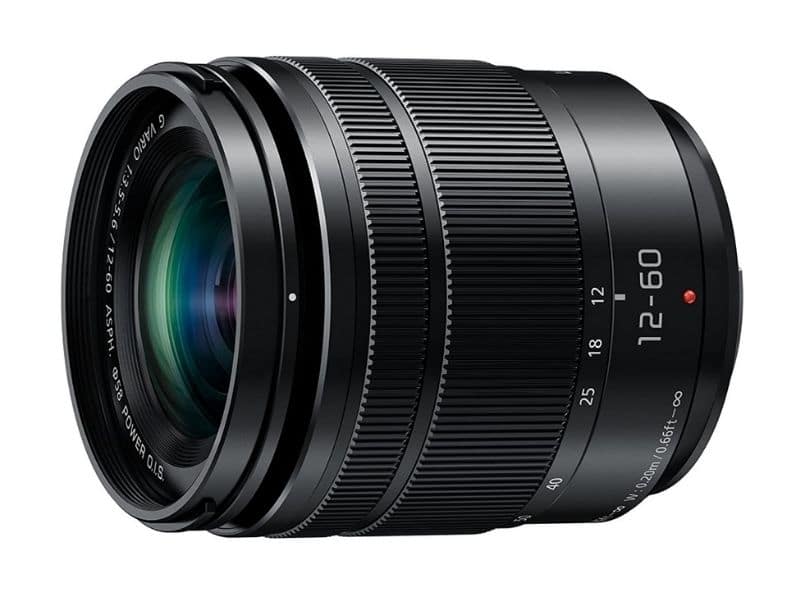
Manufacturing and Design
The PANASONIC LUMIX G VARIO LENS, 12-60MM established as a compact zoom lens, which is ideal for travel, the 12-60MM is a Micro Four Thirds method lens, which extents a multipurpose 24-120mm equivalent focal length range.
The lens strategy includes three aspherical elements and one extra-low diffusion element to lower spherical and chromatic abnormalities during the zoom range for improved clearness and image sharpness and color accuracy.
This is compatible with Micro Four Thirds mirrorless cameras; the 12-60mm lens delivers a 24-120mm equal focal length range, which extents wide-angle to telephoto perceptions.
A POWER O.I.S. technique reduces the form of camera shake for sharper handheld shooting.
It is also friendly with the cameras containing Dual I.S. for strong stability to assistance handheld shooting in problematic lighting conditions.
The rounded 7 blades diaphragm creates a smooth good bokeh quality.
The outstanding feature of weather seal, splash- and the dust-resistant structure helps to work in roughs and harsh conditions.
Key Features
- Micro Four Thirds System
- The lens is 24-120mm (35mm Equivalent)
- The aperture range is f/3.5 to f/22
- One Extra-Low Dispersion Element
- Optical image stabilization
- The maximum focal length is 60mm and the minimum focal length is 12mm
- It is compatible with MFT mounting
- The lens type is zoom lens and the focus type Autofocus
Pros
- Splash and dustproof-sealed body
- Incredible image stability with integrated LUMIX Power
- LUMIX Dual I.S. camera compatibility
- Optical Image Stabilization
- Durable and excellent travel kit
- Good quality at a good price
- Small and lighter
Cons
- There is no con found
Customer’s evaluation
“Incredible optical performance for the size and cost! This lens offers incredible optical performance for the size and cost. The stabilization is very effective and color and contrast are very good. The only negative is the slow maximum aperture but the stabilization system helps mitigate this. As a daytime walk around or travel lens, the 12-60 f/3.5-5.6 is hard to beat. Add a GM5 or GX9 and you have an excellent travel kit.” -NETAdmin
Editor’s best choice:
Best Mirrorless Camera Lenses
1. 1st Pick

This is an amazing prime lens with full of features. The Sony SEL90M28G FE 90mm f/2.8-22 Macro G OSS Standard-Prime Lens for Mirrorless Cameras builds your photography journey meaningful. It is ideal for any kind of shooting such as landscape, portrait, and macro photography. This lens perfectly well-matched with α7 series, 35mm Sony E mount full-frame cameras. You are quite sure to continue your photography practice in difficult weather; because it has dust and moisture protection to help you. Your outcome remains undeniable.
2. Runner- up Pick

Here best mirrorless camera lens review ,If you don’t mind spending money then the Fujinon XF 16mm F1.4 R WR Lens from Fujifilm will make you happy with its f/1.4 design and wide-angle field of view and performance. There is nothing left to say about the Fujifilm Fujinon XF 16mm F1.4 R WR. It structures a bright design, the lens covers a 24mm equal angle of view, and it is weather seal protected from dust and splashes. The price is high and which is the main barrier to buy this kit. If you never compromise the quality with the money then the XF 16mm can make a wonderful addition to your Fujifilm kit.
3. Budget Pick

If you are looking for a budget lens then the MK 35mm F1.7 can be a good choice. Meike MK-35mm F1.7 is a standard manual prime lens for Canon APS-C Mirrorless cameras. So you have to set the focus and aperture manually. This is also good for portrait, landscape, street, products, and indoor photography; it comes with a maximum aperture of f/1.7, which allows you to shoot at dark conditions and nighttime.
So, Our best mirrorless camera lens review mainly intended for the entry-level to intermediate level photographers to save your time and to find out the perfect camera lens for you.
I have tried to summarize everything you need to know while choosing a mirrorless lens and I have included some best mirrorless camera lens review and most of these lenses are richer in features and best in quality, as we have already discussed about the best choices.
I am hoping that if you pick one from the above list, you won’t be disappointed with the experience, no matter which one you are purchasing.
So it is time to choose any one from above-listed lenses according to your requirements and enjoys the shooting experience that you don’t want to miss again.
You may also interested in DSLR Camera Lens Types
Enjoy your shooting!
As an Amazon Associate I earn from qualifying purchases.

